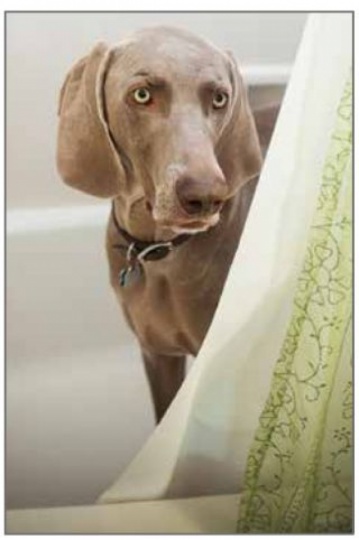
The boom of fireworks or the crash of thunder may create a wave of excitement for you.
However, for many dogs, these loud noises trigger fear and anxiety similar to a panic attack.
This anxiety is a progressive medical condition called canine noise aversion. You might know it as noise phobia or noise anxiety. At least one in three dogs suffer from noise aversion, which can leave dog owners and their families feeling helpless during summer fireworks celebrations and rolls of thunder.
A scary struggle Macie Buell watched her 14-yearold Weimaraner mix, Harley, struggle with noise aversion. Fireworks and thunder are particularly stressful for the whole family due to Harley’s condition.
“Harley is my baby, and I hate to see her in any discomfort,” Buell said. “She pants, shakes, tries to hide under furniture or takes cover in the bathtub when she hears thunder or fireworks.”
Harley’s reaction to loud noises is typical of a dog with noise aversion. Other symptoms may include vocalizing fear by barking or whining, seeking extra attention from her owner, destroying furniture or even attempting to escape from home.
Over the years, Buell discussed Harley’s reaction to fireworks and thunder with her veterinarian, Dr. Peter Eeg of Poolesville Veterinary Clinic in Poolesville, Maryland.
“We tried behavior therapy, naturopathic therapies and medications, but nothing helped Harley’s fight-orflight response to noise,” Dr. Eeg said.
A simple solution
As soon as SILEO (dexmedetomidine oromucosal gel) – the first and only U.S. Food and Drug Administration-approved treatment for canine noise aversion – became available, Dr. Eeg recommended this innovative at-home treatment for Harley. Dr. Eeg also used SILEO to treat two of his dogs that suffer from noise aversion triggered by thunder.
“Harley responded exceptionally well to treatment with SILEO,” Dr. Eeg said. “It also completely resolved my own dogs’ anxiety and fear of loud thunder.”
Clinically proven to be safe and effective without other treatments or training, SILEO is a practical, fastacting, at-home treatment for noise aversion. It begins working in about 30 minutes to one hour and provides relief for up to 2-3 hours. Your veterinarian should show you how to administer SILEO when it is prescribed.
“We have lots of thunder, fire works and construction in the neighborhood each summer,” Buell said.
“The first time I gave Harley SILEO, she napped through the thunder. It was such a relief to our family to see her relaxed and happy.”
Talk with your veterinarian
It’s important to discuss noise aversion with your veterinarian to see whether SILEO is right for your dog. To learn more, visit sileodogus.com and complete the “Triggers and Behaviors” checklist to create a free custom report and help start the conversation with your veterinarian.
